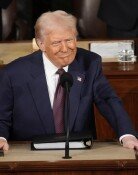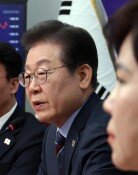400 Billion Won Loaned from Industrial Bank Spent over Two Months
400 Billion Won Loaned from Industrial Bank Spent over Two Months
Posted October. 01, 2002 23:08,
It has transpired that Hyundai Merchant Marine Co., used over a two-month period 400 billion won (approximately, $370 million) it had withdrawn in a lump sum. Thus, many people suspect that Hyundai might have had additional purposes for which the money should have been spent.
In addition, another allegation sprang up, that Fair Trade Commission (FTC) knew that Hyundai loaned 490 billion (approximately $400 million) from Industrial Bank in the name of overdrafting. But, according to the allegation, the FTC knowingly closed its eye to it even after it had launched an investigation into the transaction.
The FTC has embarked on a probe regarding the rumor that Hyundai Merchant Marine did not put on the semi-fiscal year financial statement of 2000 three quarters of the money (i.e. 400 billion won) it had loaned from Industrial Bank.
On October 1, 2002, according to the press release by Industrial Bank and Hyundai Merchant, Hyundai Merchant spent, of the loan it made from the bank, 150 billion won on ship fuel from June 7th to Aug. 18th; 59 billion won on payments for costs related to ship building from June 8th to the end of July; 174 billion won on purchase of CPs from June to August; and 17 billion won on purchase of CPs when they became mature in June.
Hyundai Merchant put out these dates in response to Grand National Partys allegation of South Korean governments secret support to North. These dates square with what Hyundai Merchant previously asserted: Out of the 400 billion won loan from Industrial Bank, we used one quarter of it in the former half of 2000, and used the rest from July and August.
Industrial Bank, in the meanwhile, verified that, when it approved of the loan on June 7th, 2000, Hyundai Merchant immediately withdrew the whole amount through three branches of it: one in Yeouido, Gooro, and marketing division of headquarters.
One banking expert says, The loan type used by Hyundai at that time bears a high interest rate (then, 11% per year) on it. However, the borrowing corporation can use the loan at any time up to the limit. Thus, it is very rare to take out the loan in a lump sum, which will be used two or three months later.
In the Oct. 1st session of the Congressional National Auditing on the FTC, Grand National Partys Rep. Lee Sung-hun contended, In August of 2000, the FTC conducted an investigation into the alleged unfair internal transactions of top 4 groups. But, the final report did not contain any investigative results regarding the 49 billion won loan and the whereabouts of the loan used for. Thus, it follows that either the FTC did not investigate thoroughly or it knowingly omitted the results from its final report.
In response, Lee Nam-ki, the head of the FTC answered, At that time, Hyundai Merchant did not make any report to us about the loan. Thus, the loan was not a subject of the investigation. We are not hiding anything at all.
One Hyundai official said, An error might have occurred in recording only one quarter of the loan on the semi-fiscal year statement of 2000. But it seems more possible that Hyundai intentionally did it so in order to pull down its total of debts over assets. Thus, it can be inferred from the statement that the semi-fiscal year report was faked on purpose. Samil Accounting Firm, which reviewed the report and submitted a statement thereafter, said, In reviewing the semi-fiscal year financial statement, we do not demand any other documents than those submitted by a corporation. In other words, no particular proofs are required to establish the truthfulness of the report. Thus, the firm indicates that Hyundai may have submitted false documents as basis of the statement.







